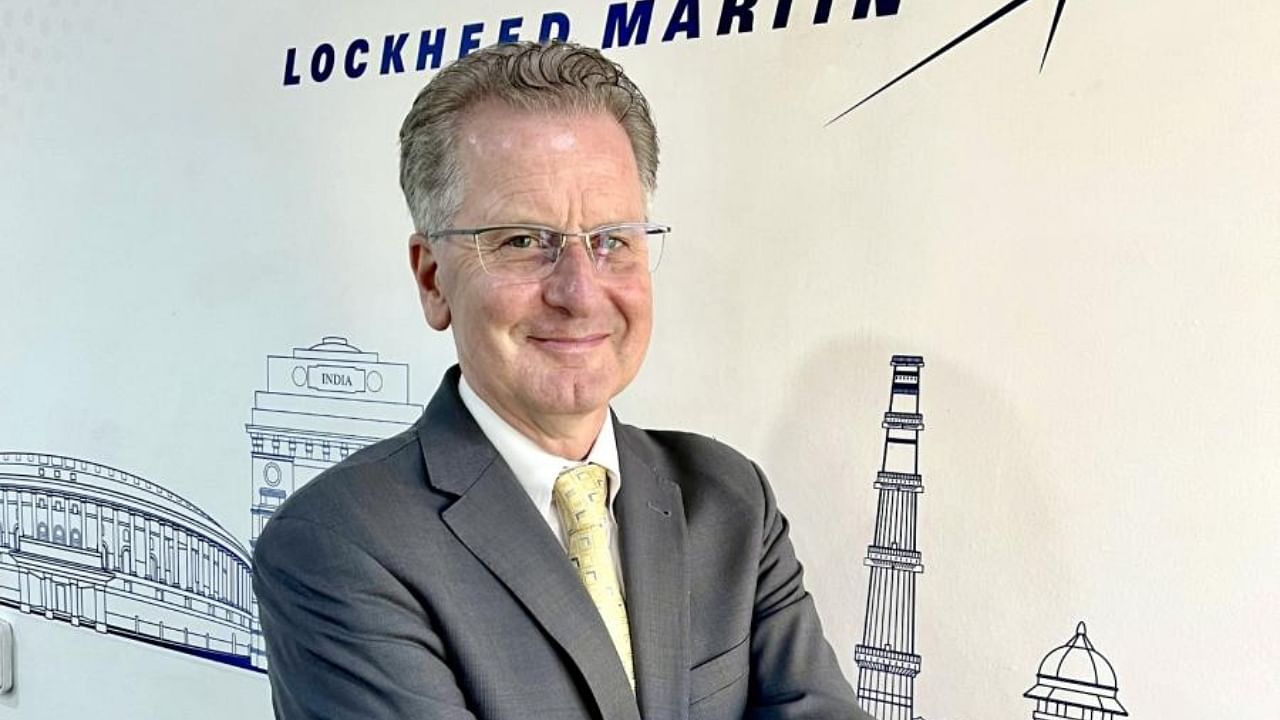
Lockheed Martin, an aerospace and defence major, is hoping to lock down the deal with the Indian Air Force for supply of its F-21 fighter aircraft in the coming year.
On the sidelines of the recently concluded Global Investors Meet in Karnataka, William Blair, the India Chief Executive of Lockheed Martin sat down with DH’s Lavpreet Kaur for an exclusive interview where he outlined the latest operations of the company in India and future investment plans in the country and Karnataka in particular. Following are edited excerpts from the interaction.
Can you share an overview of Lockheed Martin’s new operations in India
We have been in India for over 40 years and have two very well-established joint ventures with Tata - Tata Lockheed Martin Aerostructures Limited and then Tata Sikorsky Aerospace Limited, they were both created over 12 years ago now. That was a catalyst for us to engage in aerospace and defense and help enable and grow the aerospace and defense ecosystem of suppliers of MSME and startups as well.
We’ve delivered well over 180 units of empennage of the C 130 J and 157 units of the S- 92 cabinet, both with over 87% indigenous content from India. We have hundreds of suppliers that feed into that, many are here in Karnataka. Now, we’re also delivering MH-60 Romeo helicopters here in India to the Indian Navy. We’re working with HAL and BEL to integrate unique components and systems into the MH-60 Romeo for the Indian Navy requirements.
What are the specific opportunities Lockheed is looking at in the civil sector?
Predominantly Lockheed Martin is in the aerospace and defense domain, but we do have some programs under LM Energy for renewable energy storage. It has both a commercial as well as strategic application because it’s a very large scale grid level storage that is important for renewable energy to truly grow.
What are the investments and collaboration plans that Lockheed has with the Govt of Karnataka?
We’re a platform integrator and so we have very, very large partners that are delivering capability. So, we look at it through the lens of both - the investments we’re making, as Lockheed Martin here in Karnataka, and then also what our tier-1s (GE, Raytheon Technologies and L3 Harris) are doing. So, GE (General Electric) on the engines, Raytheon and Collins, and others, companies that come under Raytheon also have systems that they are putting on our platforms.
We need to partner with states like Karnataka, with our tier-1s, so that they establish a presence here with partners and suppliers. And in the longer term, we’re looking at bigger investments.
On the F21 offer to the Indian Air Force, could you tell us about the status of the proposal and the response?
Well, you know, we’re very interested and hopeful that we’ll see a request for proposal, possibly next year for the multi-role fighter aircraft requirement.
We started producing fighter wings at our Tata Lockheed Martin Aerostructures Limited and displayed the first fighter wing at (the) DefExpo just a couple of weeks ago. And that integrates components from suppliers from Karnataka, as well as other neighboring states that actually allowed us to get to 70% indigenous content on our first wing that we produced.
So, those are the investments that we’re making and integrating this potentially into our global supply chains.
Which of your products is seeing higher demand and has emerged as a star product?
C-130 is an overall workhorse with the Air Force, that’s very, very well accepted. Romeo’s MH-60 is very well accepted. We’re excited about Romeo’s induction into the Navy.
What are the advantages that Lockheed has in India over rivals such as Raytheon and Northrop Grumman?
We were making in India before ‘Make in India’ was actually an initiative. So, I think in that sense, we’re positioned to be a real partner here in India under the self-reliant India initiative, to find that balance of best capability at the most competitive price and provide long-term sustainability on highly reliable systems, that is going to be what meets India’s mission needs as well as Indian self reliance requirements.